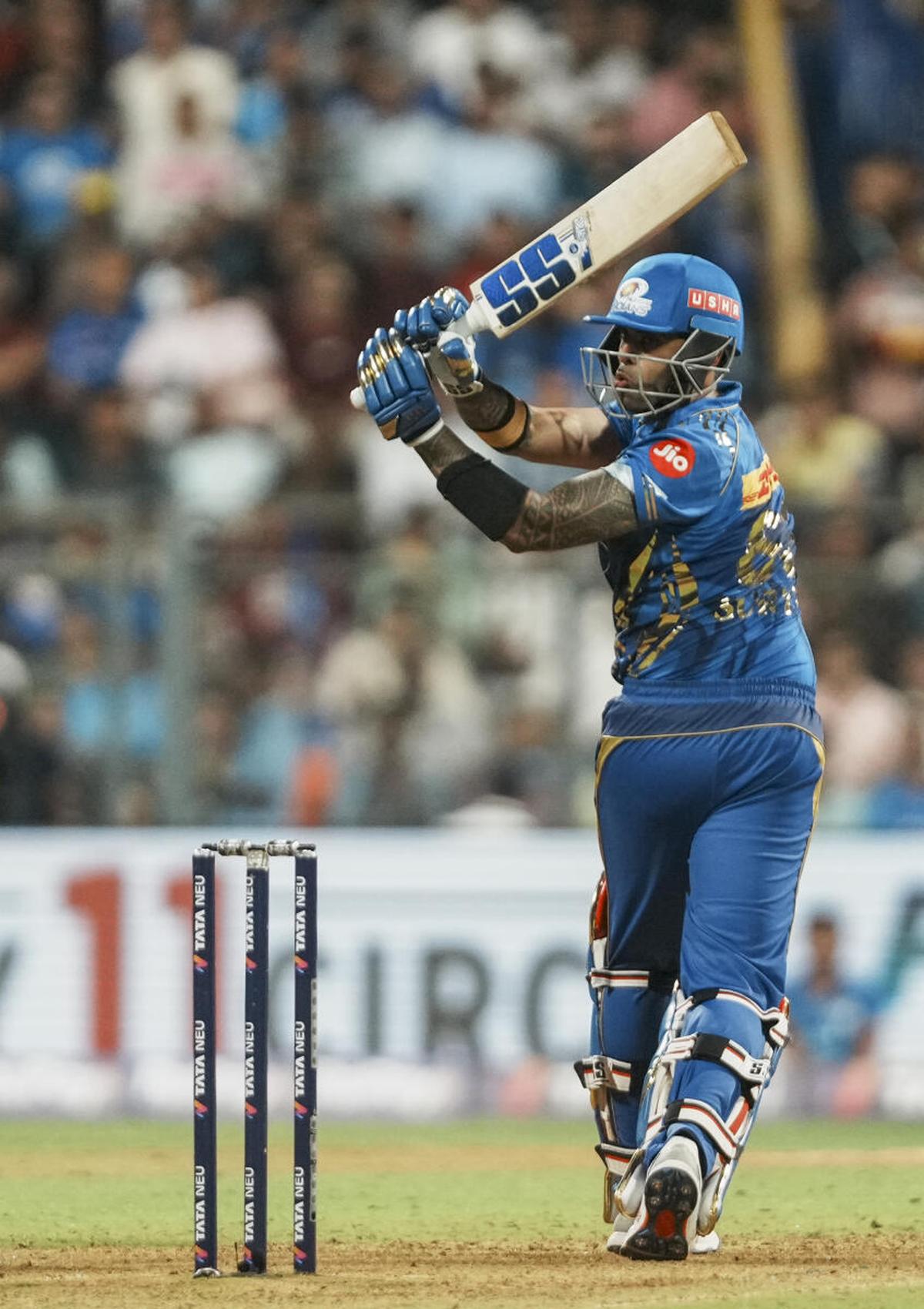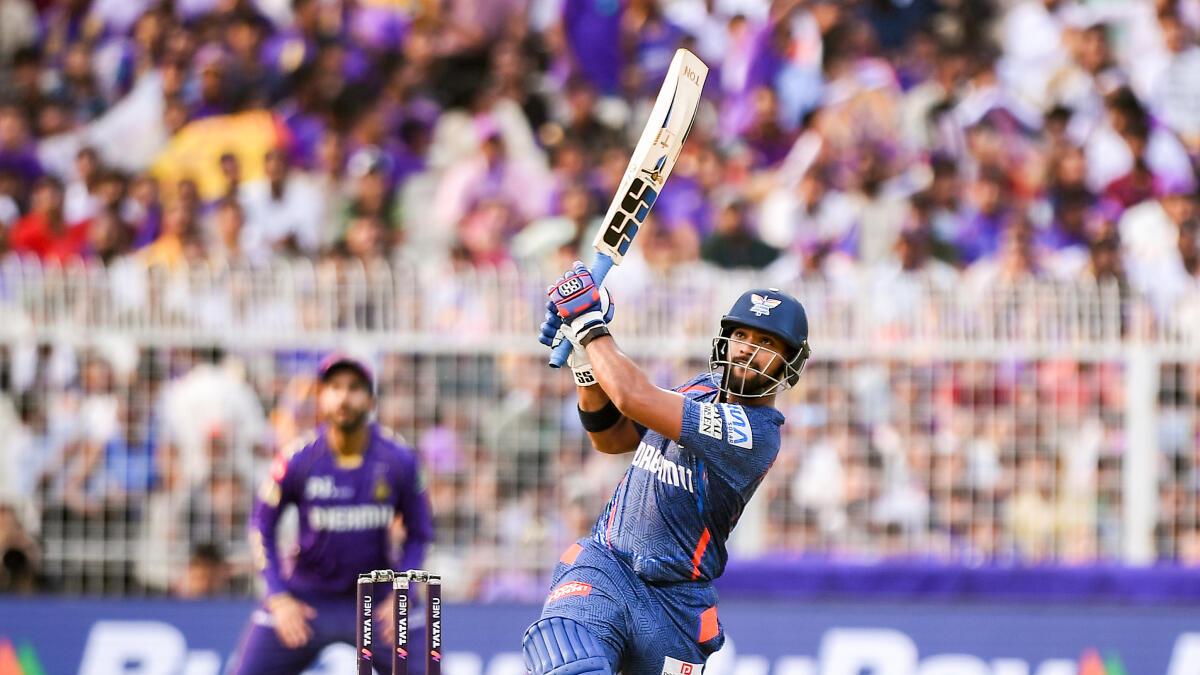For those of an older vintage who fell in love with cricket and its time-honoured traditions long before T20 became an all-pervasive part of the game, a six was a rare spectacle. An occasional occurrence that retained a tinge of novelty each time.
For the ball to sail into the stands, a batter had to summon a fair degree of physical strength and bring the blade’s thicker middle into play. Even as the quality of bats improved and the 50-over game grew in popularity in the 1990s and early 2000s, six-hitting came naturally to just a handful.
ALSO READ | Striking the perfect chord? Making sense of BCCI’s annual contracts
The abandoning of inhibition
And then T20 cricket came along, altering the game in many ways on and off the field. Since the advent of the shortest format in England in 2003 and its subsequent blossoming around the globe, the biggest cricketing shift has been the abandoning of inhibition by batters.
They have capitalised on the format’s inherent leaning towards them and augmented their six-hitting skills to an extent that couldn’t have been envisaged a couple of decades ago. So much so that the emphasis on pushing the game forward has filtered through to the ostensibly sacrosanct five-day version as well.
Here are some numbers to chew over. From 1877 to 1999, the first 123 years of Test cricket, an estimate of the total sixes hit was 4,585 across 1,480 matches. In the next 25 years, there have been 8,293 maximums. In ODI cricket, the first 29 years (1971 to 1999) saw 4,974 sixes over 1,531 matches. Since January 2000, 22,827 sixes have been smashed across 3,332 matches.
In the 3,152 T20Is held since 2005, there have been 28,456 hits beyond the boundary. That is roughly nine sixes per game.
The Indian Premier League, which has embraced adulthood this year, has played a prominent part in expediting the game’s transformation. Over 18 seasons of the annual summer extravaganza, the sight of a batter wielding that willow like a sledgehammer has been routine. The current average of 12 sixes per IPL match is only rising.
Nobody has delivered more humongous hits in the IPL than Chris Gayle. In 141 innings for three different franchises, the tall and burly Jamaican plundered 357 sixes.
| Photo Credit:
Akhilesh Kumar
Nobody has delivered more humongous hits, of course, than Chris Gayle. In 141 innings for three different franchises, the Jamaican, tall, burly and dreadlocked, plundered 357 sixes. That there is no imminent threat to his tally despite his last appearance being in 2021 is proof of his potency. Rohit Sharma, Virat Kohli and M.S. Dhoni are second, third and fourth on this exalted list.
No ground big enough
Gayle, with his long reach and giant slab of muscle, encountered no ground big enough to contain him. The same could be said about two other West Indians with illustrious IPL careers.
Kieron Pollard was Mumbai Indians’ designated destructor in the death overs for 13 straight seasons, bludgeoning 223 sixes in 189 matches with a bat that appeared like a toothpick in front of his thickset frame. For Kolkata Knight Riders, Andre Russell has been just as intimidating, hitting a six every seven balls on average. Even Gayle and Pollard, in fact, didn’t enjoy Russell’s six-hitting frequency.
“Russell was just born to hit sixes. Big, powerful individual. If I was going to make a T20 player, it would be Dre Russ in his pomp. He can clear the ropes easily,” says Englishman Julian Wood, a specialist power-hitting coach who has worked with Punjab Kings.
Leading the charts this year is another West Indian in Nicholas Pooran. The 29-year-old from Trinidad has taken his game to a higher plane for Lucknow Super Giants, blending his six-hitting prowess with new-found consistency at No. 3. His tally of 31 sixes is far superior to his competitors, and he is also in the race to finish as the season’s highest run-getter.
ALSO READ | Are the pieces of the Kings jigsaw finally falling into place?
Pooran isn’t physically imposing. But when he extends his arms and brings that bat down from a high back-lift to make a sound connection, the ball invariably disappears into the sea of spectators. “I just try my best to get in good positions and if it’s there, just time the ball nicely,” Pooran said. “I’ve never worked on my bat speed, I’m just blessed with incredible talent.”
Casting a keen eye on Pooran’s method, Wood explains: “He has great fundamentals. He relies heavily on the rhythm and timing of his movements. When the rhythm and timing is right, it gets you to the right place at the right time. He is so clear in what he does. He knows if the ball is in his slot, it’s six.”
The likes of Jos Buttler, Glenn Maxwell and Suryakumar Yadav work with similar attributes. In the past, AB de Villiers was another of this ilk, combining malleable wrists, supersonic hands and insane bat speed.

Suryakumar Yadav’s striking prowess is enhanced by his ability to use the angles and hit the ball to different places.
| Photo Credit:
PTI
“The big guys can stay still and just muscle it. The smaller guys need to get the rhythm and timing of their movements right. And you can’t get too close to the ball. You need space,” Wood continues, “I call it clean space, for the hands and bat to come through. If you have too much space, you lose control of the bat. If you have too little space, you get restricted. What these guys are very good at is creating the optimum space that they want. Without it, you cannot accelerate your hands through the ball.”
Another dimension
Lending another dimension to the skillset of these players is a 360-degree repertoire. With ramps, scoops and sweeps of the conventional and reverse variety in their locker, for a bowler to stem the flow of runs is to squeeze water from a stone. Even a yorker carries the risk of going all the way because of the inventive shots behind the wicket
Take the example of Suryakumar. A pick-up shot over fine-leg, often struck with enough velocity to fetch maximum reward, is his signature. “He can score at a strike-rate of 180 without taking many risks. He uses the angles superbly to hit the ball to different places,” says Wood.
Then there are touch players, like Ajinkya Rahane and B. Sai Sudharsan, who bank on the ball coming onto the bat and the innate gift of timing. Favourable match-ups are particularly sought by these batters to compensate for certain limitations. And yet, both Rahane and Sudharsan are among the most prolific six-hitters this year with 15 maximums each.
The proliferation of sixes, however, begs the question: can it eventually evoke ennui among the spectators? The query was put to Wood, who makes his living by training batters to belt the ball out of the ground. “People want to see sixes,” he responds, before adding, “But they, of course, want to see a fair contest. People want to go and see batters hit sixes. They want to see pacers bowl 150kmph and spinners who can spin it both ways. That is how I see the game.

The 360-degree repertoires of players such as Jos Buttler give opposition captains and bowlers headaches. Having to contend with ramps, scoops and sweeps of the conventional and reverse variety isn’t a job for the faint-hearted.
| Photo Credit:
PTI
”This IPL season has averaged about 17 sixes per game so far. If hordes of fans are thronging into stadiums in the scorching heat every year and many others are tuning in on their television screens and mobile phones, you would like to believe that a six is still a thrill-inducing spectacle. But let’s just say that it isn’t rare anymore.
Published – April 26, 2025 03:18 pm IST
